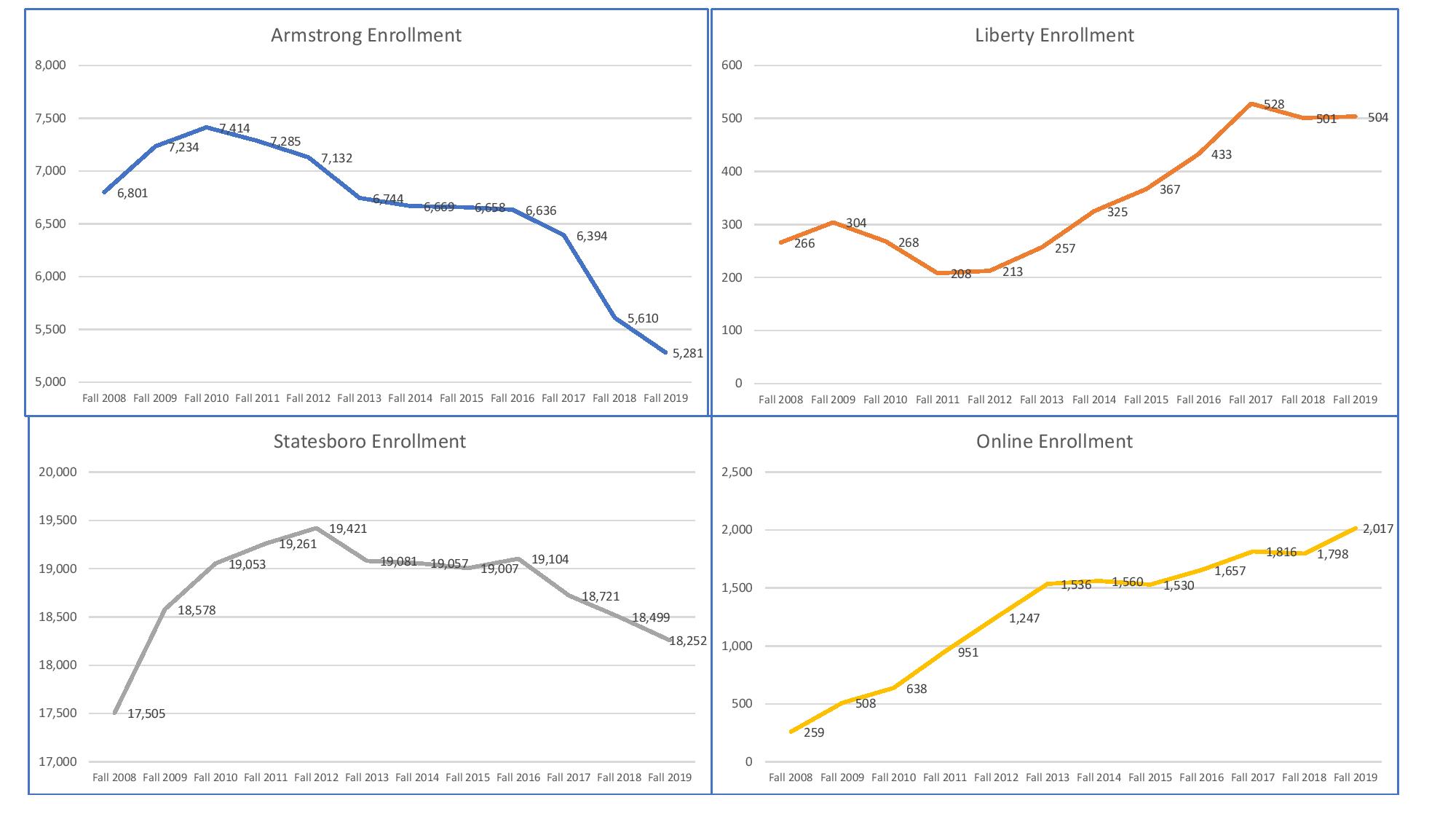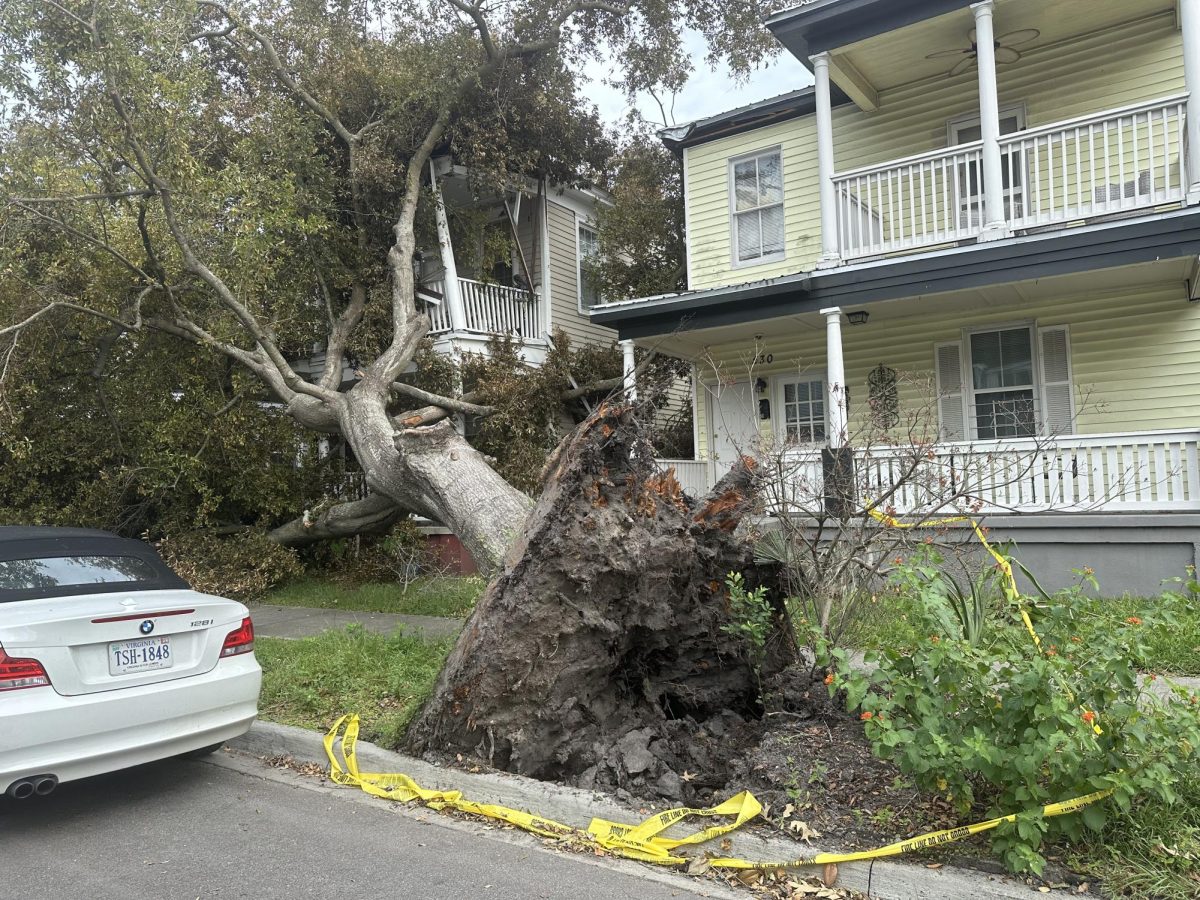Rebecca Munday, Staff Writer
A new report shows 2019 enrollment is down 1.3 percent from 2018.
“Enrollment is, and will continue to be, our No. 1 priority,” said President Dr. Kyle Marrero in the official press release on the subject.
“I’m pleased with the work we have done in the last six months to mediate any decline, and I’m more excited than ever about our future.”
Dual Enrollment and Graduate Studies gained students but every class of undergraduate students got smaller. This resulted in a net loss of 354 students.
“It’s a shame,” Mihir Patel said.
Students have a variety of different feelings about this enrollment decline. Some students attributed the cause to optics behind the merger.
“Maybe it’s because of the merger. It’s probably just going to get better after it’s more solidified,” Delaia Reyes said.
“Right now, everyone is trying to get some clarity,” Sampson Allotey said.
“We don’t have the appeal compared to the main campus,” Max Huber said.
“I’m not surprised. Students and families are having to pay for a larger percentage of their tuition and they just can’t afford it.” -Kaitlin Fleming
While enrollment is down in both Savannah and Statesboro, Savannah has taken a harder hit with a 5.9 percent decrease compared to Statesboro’s 1 percent decrease. Some students feel the university shares some of the blame.
“After the book burning, I don’t know what they expected,” Regan Gayadeen said.
“It’s upsetting we’re not advertising the way we should to obtain students,” Brea Yates said.

Others feel that money has something to do with the decline. “I’m not surprised. Students and families are having to pay for a larger percentage of their tuition and they just can’t afford it,” Kaitlin Fleming said.
“That’s good…less people in debt,” said Matt Gentile said, when he heard enrollment was down.
Director of Communications, Jennifer Wise has a different take on the decline in enrollment.
“This result actually reverses the trend coming out of consolidation where last year’s decline was greater. University staff and faculty did a wonderful job in the last year to mediate the decline, and we are doing even more this year to get back into positive territory in Spring, Summer and for next Fall,” Wise said.
According to Wise, they are continuing to work on a plan to reverse the enrollment trend. “The efforts to reverse the enrollment decline are very comprehensive and span across the university. We have made changes to our recruitment approach such that we have re-doubled our efforts to heavily recruit all populations of students–instead of just focusing on direct from high school freshmen. We are working on a 5-year Strategic Enrollment Plan which includes upgrades in technology and a new marketing and branding effort. We are also in the process of introducing new academic programs and enhancements to our retention and progression efforts through academic advising and college-based services. We are increasing our relationships within the region with the Regional Academic Plan and efforts to develop articulation agreements with institutions around the state,” Wise said.
“This result actually reverses the trend coming out of consolidation where last year’s decline was greater.” -Jennifer Wise
Part of this plan also includes rethinking on-campus student life, how classes are offered and what populations of students Georgia Southern advertises to.
“We are diversifying the populations we serve because population trends suggest that the number of high school graduates will be declining. Such diversification requires Georgia Southern to rethink the way we offer classes, how we activate student life on campus, and the populations of students we seek to attract. Graduate students, military-connected students, transfer students, out of state students, international students, and dual enrollment students will be crucial to our enrollment success, and we must earnestly implement strategies, programs, and services to support those populations to a greater extent if we are to attract and retain them,” Wise said.
The next public release of enrollment statistics will be available in fall 2020.







